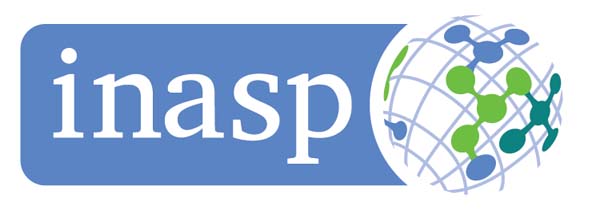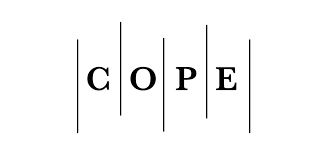Review about applications of Remove haze from images
DOI:
https://doi.org/10.29304/jqcm.2022.14.3.988Keywords:
Dehazing, Applications of dehazing, Machine LearningAbstract
The problem of removing haze from images is a problem that researchers have been interested in, because of its importance in various fields in computer vision and image processing. The photos are usually taken in nature, like forests, cities, streets, etc., and are generally accepted in terrible weather conditions, especially fog. This is because the light is a critical factor in obtaining clear images, assuming the cameras' quality. The presence of various types of haze (smoke, fog, and dust) reduces the light rays that are reflected from the scenes to be photographed, so removing the haze was the researchers' primary concern. Moreover, many computerized devices use these cameras and imaging devices in various fields. Through this research, we will mention a number of those applications that use this biotechnology "dehazing."
Downloads
References
[2] M. Grover, P. Singh, P. Kaur, and C. J. W. P. C. Madhu, "Multibeam WDM-FSO system: an optimum solution for clear and hazy weather conditions," vol. 97, no. 4, pp. 5783-5795, 2017.
[3] A. Juneja, V. Kumar, and S. K. J. A. o. C. M. i. E. Singla, "A Systematic Review on Foggy Datasets: Applications and Challenges," pp. 1-26, 2021.
[4] I. Gultepe et al., "A review on ice fog measurements and modeling," vol. 151, pp. 2-19, 2015.
[5] M. Maqsood, I. Mehmood, R. Kharel, K. Muhammad, J. Lee, and W. S. J. H. C. C. I. S. Alnumay, "Exploring the Role of Deep Learning in Industrial Applications: A Case Study on Coastal Crane Casting Recognition," vol. 11, pp. 1-14, 2021.
[6] L. J. C. Gye, "Picture this: The impact of mobile camera phones on personal photographic practices," vol. 21, no. 2, pp. 279-288, 2007.
[7] K. Senthilkumar, P. J. C. a. i. Sivakumar, d. i. clinical, and m. images, "A review on haze removal techniques," pp. 113-123, 2019.
[8] E. J. J. N. Y. McCartney, "Optics of the atmosphere: scattering by molecules and particles," 1976.
[9] T. Guo and V. Monga, "Reinforced depth-aware deep learning for single image dehazing," in ICASSP 2020-2020 IEEE International Conference on Acoustics, Speech and Signal Processing (ICASSP), 2020, pp. 8891-8895: IEEE.
[10] Y. Ali, F. Janabi-Sharifi, S. J. B. S. P. Beheshti, and Control, "Echocardiographic image segmentation using deep Res-U network," vol. 64, p. 102248, 2021.
[11] B. Li, Y. Gou, J. Z. Liu, H. Zhu, J. T. Zhou, and X. J. I. T. o. I. P. Peng, "Zero-shot image dehazing," vol. 29, pp. 8457-8466, 2020.
[12] B. Li, Y. Gou, S. Gu, J. Z. Liu, J. T. Zhou, and X. J. I. J. o. C. V. Peng, "You only look yourself: Unsupervised and untrained single image dehazing neural network," vol. 129, no. 5, pp. 1754-1767, 2021.
[13] S. An, X. Huang, L. Wang, L. Wang, and Z. J. T. V. C. Zheng, "Semi-Supervised image dehazing network," vol. 38, no. 6, pp. 2041-2055, 2022.
[14] Q. Liu, Y. Qin, Z. Xie, Z. Cao, and L. J. S. Jia, "An efficient residual-based method for railway image dehazing," vol. 20, no. 21, p. 6204, 2020.
[15] W. Ren et al., "Gated fusion network for single image dehazing," in Proceedings of the IEEE conference on computer vision and pattern recognition, 2018, pp. 3253-3261.
[16] S. F. Raheem and M. J. I. Alabbas, "Dynamic Artificial Bee Colony Algorithm with Hybrid Initialization Method," vol. 45, no. 6, 2021.
[17] M. Alabbas, R. S. Khudeyer, and S. Jaf, "Improved Arabic characters recognition by combining multiple machine learning classifiers," in 2016 International Conference on Asian Language Processing (IALP), 2016, pp. 262-265: IEEE.
[18] A. Ferahtia, "See discussions, stats, and author profiles for this publication at: https://www. researchgate. net/publication/350567414 SURFACE WATER QUALITY ASSESSMENT IN SEMI-ARID REGION (EL HODNA WATERSHED, ALGERIA) BASED ON WATER QUALITY INDEX (WQI)," 2021.
[19] N. M. A.-M. M. Al and R. S. J. I. Khudeyer, "ResNet-34/DR: A Residual Convolutional Neural Network for the Diagnosis of Diabetic Retinopathy," vol. 45, no. 7, 2021.
[20] M. Han, Z. Lyu, T. Qiu, M. J. I. T. o. S. Xu, Man,, and C. Systems, "A review on intelligence dehazing and color restoration for underwater images," vol. 50, no. 5, pp. 1820-1832, 2018.
[21] S. C. Agrawal and A. S. J. A. o. C. M. i. E. Jalal, "A Comprehensive Review on Analysis and Implementation of Recent Image Dehazing Methods," pp. 1-52, 2022.
[22] J. Liu, S. Wang, X. Wang, M. Ju, and D. J. S. Zhang, "A review of remote sensing image dehazing," vol. 21, no. 11, p. 3926, 2021.
[23] H. Guo et al., "Frequency upconversion detection of rotational Doppler effect," vol. 10, no. 1, pp. 183-188, 2022.
[24] L. Sun, J. Chen, D. Feng, and M. J. I. A. Xing, "The recognition framework of deep kernel learning for enclosed remote sensing objects," vol. 9, pp. 95585-95596, 2021.
[25] F. Wang, K. Zhou, M. Wang, and Q. J. S. Wang, "The impact analysis of land features to JL1-3B nighttime light data at parcel level: Illustrated by the case of Changchun, China," vol. 20, no. 18, p. 5447, 2020.
[26] K. Liu, L. He, S. Ma, S. Gao, and D. J. S. Bi, "A sensor image dehazing algorithm based on feature learning," vol. 18, no. 8, p. 2606, 2018.
[27] K. Dashtipour et al., "Detecting Alzheimer’s disease using machine learning methods," in EAI International Conference on Body Area Networks, 2021, pp. 89-100: Springer.
[28] M. Chambah, D. Semani, A. Renouf, P. Courtellemont, and A. Rizzi, "Underwater color constancy: enhancement of automatic live fish recognition," in Color Imaging IX: processing, hardcopy, and applications, 2003, vol. 5293, pp. 157-168: SPIE.
[29] A. Amer and H. Schroder, "A new video noise reduction algorithm using spatial subbands," in Proceedings of Third International Conference on Electronics, Circuits, and Systems, 1996, vol. 1, pp. 45-48: IEEE.
[30] K. Iqbal, R. A. Salam, A. Osman, and A. Z. J. I. I. J. o. c. s. Talib, "Underwater Image Enhancement Using an Integrated Colour Model," vol. 34, no. 2, 2007.
[31] X. Chen, X. Xu, Y. Yang, H. Wu, J. Tang, and J. J. I. A. Zhao, "Augmented ship tracking under occlusion conditions from maritime surveillance videos," vol. 8, pp. 42884-42897, 2020.
[32] X. Chen, S. Wang, C. Shi, H. Wu, J. Zhao, and J. J. T. J. o. N. Fu, "Robust ship tracking via multi-view learning and sparse representation," vol. 72, no. 1, pp. 176-192, 2019.
[33] Y. Guo, Y. Lu, R. W. Liu, M. Yang, and K. T. J. I. A. Chui, "Low-light image enhancement with regularized illumination optimization and deep noise suppression," vol. 8, pp. 145297-145315, 2020.
[34] M. Yang, X. Nie, and R. W. Liu, "Coarse-to-fine luminance estimation for low-light image enhancement in maritime video surveillance," in 2019 IEEE Intelligent Transportation Systems Conference (ITSC), 2019, pp. 299-304: IEEE.
[35] X. Hu, J. Wang, C. Zhang, and Y. J. J. o. A. T. Tong, "Deep Learning-Enabled Variational Optimization Method for Image Dehazing in Maritime Intelligent Transportation Systems," vol. 2021, 2021.
[36] R. Richter and D. J. D. Schläpfer, ReSe Applications, Switzerland, "ATCOR-2/3 User Guide, Version 9.0. 0," 2015.
[37] X. Chen, Y. Li, L. Dai, C. J. I. G. Kong, and R. S. Letters, "Hybrid high-resolution learning for single remote sensing satellite image Dehazing," vol. 19, pp. 1-5, 2021.
[38] J. Hultberg, "Dehazing of Satellite Images,," Computer Vision Laboratory Department of Electrical Engineering Linköping University SE-581 83 Linköping, Sweden, 2018.
[39] K. Yu, L. Lin, M. Alazab, L. Tan, and B. J. I. t. o. i. t. s. Gu, "Deep learning-based traffic safety solution for a mixture of autonomous and manual vehicles in a 5G-enabled intelligent transportation system," vol. 22, no. 7, pp. 4337-4347, 2020.
[40] L. Zhao, K. Yang, Z. Tan, X. Li, S. Sharma, and Z. J. I. T. o. I. T. S. Liu, "A novel cost optimization strategy for SDN-enabled UAV-assisted vehicular computation offloading," vol. 22, no. 6, pp. 3664-3674, 2020.
[41] B. Li, Y. Hua, and M. J. a. p. a. Lu, "Advanced Multiple Linear Regression Based Dark Channel Prior Applied on Dehazing Image and Generating Synthetic Haze," 2021.
[42] X. Min et al., "Quality evaluation of image dehazing methods using synthetic hazy images," vol. 21, no. 9, pp. 2319-2333, 2019.
[43] J. Jackson, S. Kun, K. O. Agyekum, A. Oluwasanmi, and P. J. I. A. Suwansrikham, "A fast single-image dehazing algorithm based on dark channel prior and Rayleigh scattering," vol. 8, pp. 73330-73339, 2020.
[44] G. Sahu, A. Seal, O. Krejcar, A. J. J. o. V. C. Yazidi, and I. Representation, "Single image dehazing using a new color channel," vol. 74, p. 103008, 2021.
[45] H. Ullah et al., "Light-DehazeNet: a novel lightweight CNN architecture for single image dehazing," vol. 30, pp. 8968-8982, 2021.
[46] W. Qian, C. Zhou, and D. J. M. P. i. E. Zhang, "FAOD-Net: a fast AOD-Net for dehazing single image," vol. 2020, 2020.













